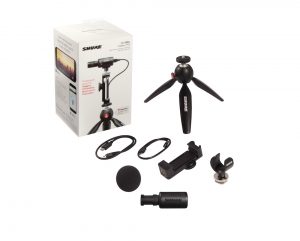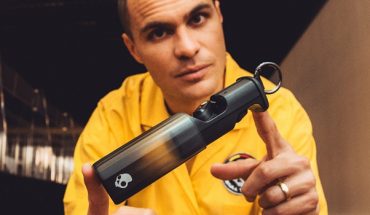There’s probably a favourite podcast you listen to while commuting, working out, going for a jog, or enjoying downtime. But have you ever considered starting one yourself? Now that we have been quarantining or abiding by stay-at-home orders for almost an entire year, with no specific end in sight to the pandemic, many people are picking up new hobbies while businesses are finding creative ways to connect with customers and clients. A podcast can be a great way to do just that.
While it might seem easy – grab a computer, a microphone, and some recording software, come up with a viable topic and you’re off to the races. But starting a podcast isn’t quite so simple. There are important elements to consider, especially if you hope to eventually acquire a solid group of listeners, and/or use the podcast to boost the profile of your business. Ever listen to a podcast with terrible audio quality? Awkward bouts of silence? Dialogue that sounds like marketing speak? Chances are, that was the first and last time you tuned in.
With that said, here’s what you need to do to set yourself up for success before throwing your hat into the podcasting ring.
Buy the Right Gear
It’s important to get equipment that will lend itself to quality, and that means spending a bit more than you might have anticipated. The essential items are:
- A smartphone, tablet, and/or computer (which you probably already own)
- Recording device or software. Audacity, Record For All, and Easy Recorder VS are free options worth considering. Mac users can use GarageBand. You can also go all out and get a recorder from a brand like Zoom.
- Microphone. Consider leading brands like Heil, Audio-Technica, Shure, or Blue (the Yeti being the most popular option for podcasters), or higher-end models from a brand like Rodecaster.
- Reliable Internet connection. This is especially so if you’ll be conducting the interviews virtually over programs like Skype, FaceTime, or Zoom.
- Headphones. These aren’t essential but you will benefit from wearing a pair for crystal clear sound and control over the audio
- Post-processing software. This can come in handy for stitching together podcasts that have various audio elements, like audio bits, or even short commercial breaks. Software like Mackie ProFX 8, for example, can be used to mix audio.

Shure MV88+ Video Kit
For those just starting out, consider an all-in-one kit like the Shure MV88+ Video Kit, which has been getting great reviews since it launched in early 2019. It has everything you’d need to start a podcast, including a portable mic, tripod, phone clamp and mount, and Lightning and USB-C cables. Download the free Shure Motiv Video and Audio Recording apps and use it to adjust audio and record directly to your phone. At about $250, it’s a great set for beginners.
Have a Plan for Content
The worst thing you can do when starting a podcast is have an idea but no concrete plan when it comes to the content, which is the meat and potatoes of the project. Avoid rambling on about a topic; focus on offering insight in an engaging way that entice people to listen. There’s a lot to consider in this respect, from podcast episode length to guests (or no guests), themes, and so on.
- Decide what you’re going to talk about. It should be a topic you are an authority on and can speak about with confidence. It also must be a topic that would be interesting to your target audience. If you have a unique perspective on a specific topic, even better.
- Avoid brand promotion. The point of a podcast is to present yourself as knowledgeable about your industry, not to directly promote your products and/or services. Doing so will be an automatic turn-off to listeners.
- Select a podcast name. You want it to be catchy and exciting but also accurately describe what the podcast is about.
- Will you have guests? Will the podcast involve you talking about a topic? Answering questions? Playing clips? Telling stories? Or will you interview guests? If the latter, book a line-up of candidates ahead of time to ensure a steady flow of content once you get going.
- Decide on episode length. How long will each podcast be? An hour? Half an hour? 15 minutes? This will all depend on the topic, content, and where and when you think listeners will be tuning in. Half an hour is a good starting point. It’s the perfect length of time for the average commute, time on the treadmill, or lunch hour. But some podcasts accomplish what they need to in short 10-15-minute episodes while others manage to keep viewers at the edges of their seats for upwards of an hour.
- Choose frequency. Consistency is key for raising the profile of a podcast. If you release an episode than no one hears from you for months, chances are you’ll lose any listeners you do have. Decide on a consistent schedule and, most importantly, stick to it. Maybe that means releasing a new episode every Tuesday or even the first Sunday of every month. As long as fans know when to expect a new episode, and they don’t have to wait too long between them, they won’t forget about you.
Prepare to Upload
Once the podcast has been recorded and you’re ready to share it, where do you go? You can publish a podcast to an existing website as an MP3 audio file using software like FiresideFM (for a nominal fee). Or create an XML file to host podcasts directly on your website. There’s also the podcast hosting Website Blubrry for easily adding a podcast plug-in to a WordPress website.
Register the podcast to popular podcast directories where they will be picked up and become searchable by listeners. Some of the most popular podcast directories include Apple Podcasts, Android Podcasts, Spotify, and, most recently in Canada, Amazon Podcasts. Others include Stitcher, TuneIn, Pocket Casts, Girth Radio, MixCloud, and TalkShow. Typically, all you need to do is fill out an application form with your name, podcast title, and links to where the file can be accessed. The directories for these services continuously crawl the Internet, looking for new content to add as it is made available.
Several podcasters we have spoken to in the past use an app called Anchor that makes it easy to record, upload, and save a recording for later broadcast to a variety of podcast directories. The best part? It’s free!
Useful Tips About Podcasting
After talking with a number of podcasters in Canada, there are a number of additional tips to keep in mind once you’re ready to move forward.
- Have a second mic. If you are interviewing a guest in person, have a second mic to keep the voice levels consistent. Consider also recording a separate track for each person and syncing them up after to further ensure balance.
- Write a script. Devise a script or at least rough notes on what you want to talk about to ensure a steady flow of conversation and seamless segues between topics. If you will be interviewing someone, prep them on questions ahead of time so they aren’t caught off guard and can come prepared for a more engaging chat, or even suggest other topics or directions you can take the conversation.
- Record a back-up. It’s the worst feeling to go through an entire interview only to discover that the file is corrupted or was accidentally erased. Use a service like Skype or even FaceTime to record a back-up, ideal if you’re doing a virtual interview using one of these platforms already anyway.
Happy Podcasting!

Karim Kanji, host of Welcome with Karim Kanji, records a podcast interview with Toronto City Councillor Michael Thompson.
Setting up a podcast requires work but it can be tremendously rewarding to a business or individual. And once you get the hang of it, the process will become second nature.
However, don’t enter the world of podcasting expecting for it to become a revenue stream, at least not right away and potentially not at all. For most podcasters, podcasting is a hobby, a passion project. For others, it’s an investment in time that pays off in non-tangible ways through brand awareness, customer relationship building, and reputation: it reinforces you and your company as a knowledgeable and respected authority on a topic. Only a tiny fraction of podcasters actually make money from them.
From a business perspective, go into podcasting with a mindset of using it as another way to connect to clients and customers, similarly to how social media, events, webinars, and other strategies are used as customer touchpoints. There’s a tremendous opportunity to use podcasting to your advantage, no matter what business vertical you’re in. But if you’re going to do it, do it right.



